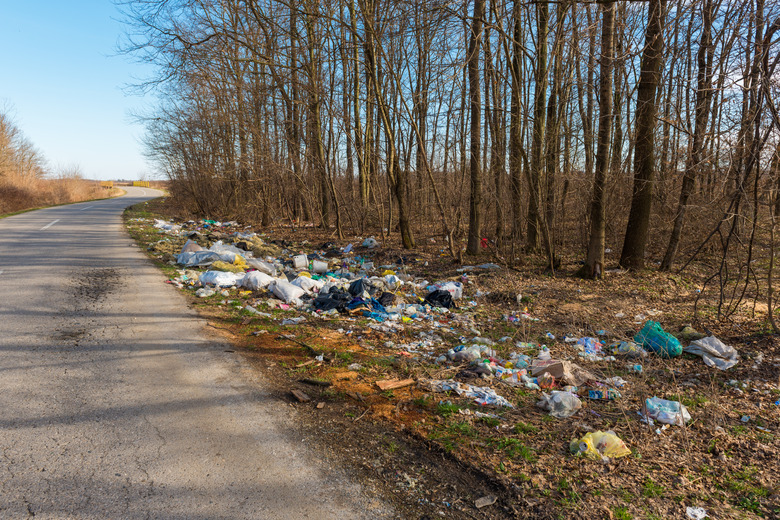How To Control Land Pollution
How can we control soil pollution? Methods to control soil pollution depend on the source of the contamination. Land pollution is defined as unnaturally high levels of chemicals, like nutrients or heavy metals, in the soil. The causes of this type of pollution can generally be traced back to three different types of activities: industrial factories, agriculture and waste disposal.
Some types of land pollution, such as abandoned mines and nuclear power plants, may take generations to remediate. Other sources, like litter and agricultural runoff, can be reduced by daily decisions made by each person on the planet.
Land Pollution From Factories
Land Pollution From Factories
Land pollution, which is also referred to as soil pollution or contamination, is a growing problem across the world. Human activities like the production of energy, extraction of resources and assembly of consumer goods are major contributors to the problem.
While it may not be possible to clean up brownfields, landfills and spill sites in a day or even a decade, it is possible to reduce man-made sources of land pollution on a daily basis. The purchasing choices we make can make a significant impact on the amount of land pollution created by our generation. Guided by the "Three R's" – reduce, reuse and recycle – we can decide to purchase fewer consumer goods and reuse products in our daily lives, ultimately reducing the amount of land pollution we create.
Because our land, water and air all all connected systems, soil pollution also affects other parts of the environment. For instance, pollutants released into the air from manufacturing activities eventually contaminate our land and water, as they combine with gases in the atmosphere to form chemicals that return to the earth with rain and snow. Toxins can also leak into the soil from spills or leaks in storage tanks at sites where consumer goods like electronics are manufactured.
Agricultural Land Pollution
Agricultural Land Pollution
One easy way to reduce land pollution is to choose organic methods of controlling pests in your yard. Supporting local and organic famers is another way to control land pollution from agriculture. Get to know the people who grow your food by shopping at farmers markets, and ask questions about the methods used on their farms for preventing erosion and eliminating the need for synthetic fertilizers.
Large quantities of livestock manure and synthetic fertilizers applied by farmers pollute our land and water. Excess nutrients present in manure and fertilizer can accumulate in the soil and be carried to oceans and lakes over time. Erosion of land, caused by agriculture or construction activities, also contributes to pollution.
Unfortunately, land pollution from agriculture can have a variety of negative effects on the health of humans, wildlife, plants and ecosystems. Polluted soil can contaminate groundwater supplies, making it unsafe for humans and animals to drink. Wind can carry particles of contaminated dust from polluted land to other places, which can affect the quality of the air we breath and may result in polluted sediment contaminating our water.
Land Pollution from Waste Disposal
Land Pollution from Waste Disposal
Pollutants can leach into the ground and water underneath landfills or areas where there is an accumulation of litter. Rain filtering through solid waste produces a substance called leachate, which is a liquid that has extracted toxins as it moves through the waste. When human sewage is improperly disposed of, this can also result in the production of leachate and the pollution of land and water.
Disposing of wastes properly is an important way to take control of land pollution. By containing our waste products to areas that are designed and filtered properly, we reduce the leachate from rubbish and sewage that pollutes our waterways and eventually makes its way back to land in the form of rain and snow.
Polluted land can affect the entire ecosystem, as is the case with land that has been altered due to acid rain. Changes in the pH of the soil and water may favor some species and make it impossible for others to survive, as has been the case in the Adirondack Mountain region of New York State over the past several decades.
Cite This Article
MLA
Sloane, Christina. "How To Control Land Pollution" sciencing.com, https://www.sciencing.com/how-to-control-land-pollution-12425616/. 30 September 2021.
APA
Sloane, Christina. (2021, September 30). How To Control Land Pollution. sciencing.com. Retrieved from https://www.sciencing.com/how-to-control-land-pollution-12425616/
Chicago
Sloane, Christina. How To Control Land Pollution last modified March 24, 2022. https://www.sciencing.com/how-to-control-land-pollution-12425616/
